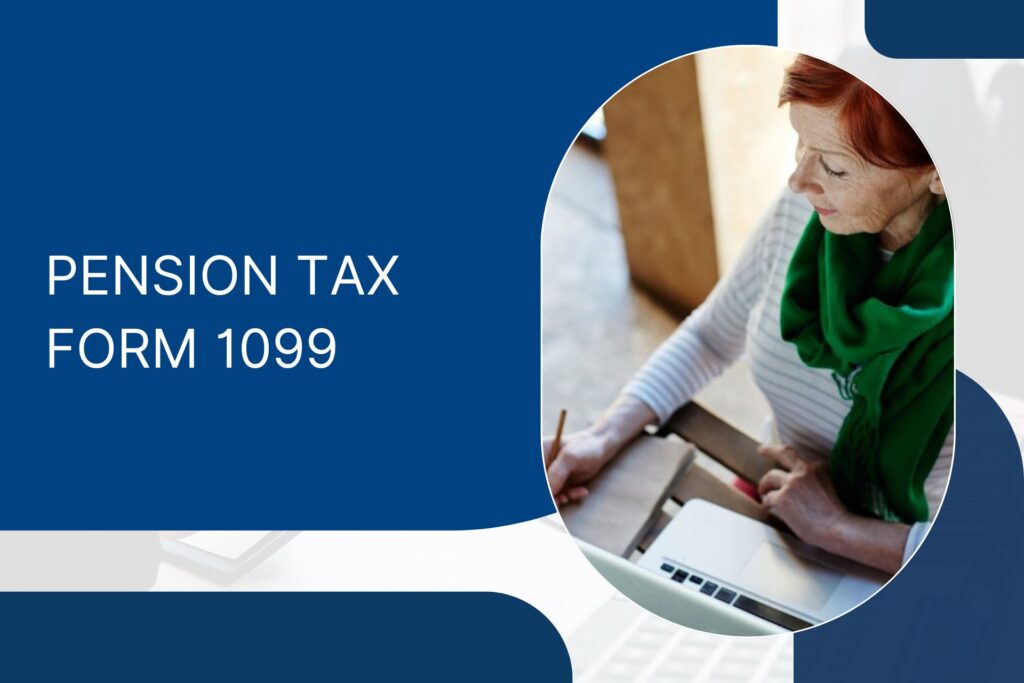Introduction: Pension Tax Form 1099
Pension tax forms are crucial documents for retirees, detailing the income received from pensions and annuities. One of the most important forms in this category is the Pension Tax Form 1099. Understanding this form is essential for accurate tax reporting and compliance with the IRS. This guide will delve into the intricacies of the Pension Tax Form 1099, its significance, how to read it, and steps to ensure accurate filing.
What is Pension Tax Form 1099?
The Pension Tax Form 1099, also known as Form 1099-R, is used to report distributions from pensions, annuities, retirement or profit-sharing plans, IRAs, insurance contracts, and similar financial products. Financial institutions issue this form to taxpayers who receive a distribution of $10 or more from their retirement plans. The form provides detailed information about the gross distribution, the taxable amount, federal income tax withheld, and other critical details.
Key Sections of Pension Tax Form 1099
Understanding each section of the Pension Tax Form 1099 is vital for accurate tax filing. Here are the key sections:
1. Payer Information
This section includes the name, address, and federal identification number of the institution that made the payment. It’s essential to ensure this information matches your records.
2. Recipient Information
This part contains your name, address, and taxpayer identification number (TIN). Verify that all details are correct to avoid any discrepancies.
3. Gross Distribution (Box 1)
Box 1 shows the total amount distributed from your retirement account. This includes both taxable and non-taxable amounts.
4. Taxable Amount (Box 2a)
Box 2a indicates the portion of the gross distribution that is taxable. This is the amount you will report on your income tax return.
5. Federal Income Tax Withheld (Box 4)
This box shows the federal income tax that has been withheld from your distribution. This amount will be credited against your total tax liability for the year.
6. Distribution Code (Box 7)
The distribution code in Box 7 explains the type of distribution you received. Each code has specific implications for your tax liability. For instance, code 1 indicates an early distribution, which may incur additional penalties.
7. State and Local Information (Boxes 12-15)
These boxes provide details on any state and local taxes withheld. Ensure this information aligns with your state and local tax filings.
How to Read Pension Tax Form 1099
Reading the Pension Tax Form 1099 correctly is crucial for proper tax reporting. Here’s a step-by-step guide:
Step 1: Verify Payer and Recipient Information
Ensure that all the details in the payer and recipient sections are accurate. Any errors here can lead to issues with your tax filing.
Step 2: Review Gross Distribution and Taxable Amount
Check Box 1 (Gross Distribution) and Box 2a (Taxable Amount). Compare these amounts with your records to ensure they are accurate. If there is a discrepancy, contact the payer for clarification.
Step 3: Confirm Federal and State Tax Withheld
Verify the amounts in Box 4 (Federal Income Tax Withheld) and Boxes 12-15 (State and Local Information). These amounts should be consistent with your expectations and prior withholdings.
Step 4: Understand the Distribution Code
Refer to Box 7 for the distribution code. Familiarize yourself with the meaning of the code provided, as it impacts how the distribution is taxed and whether any penalties apply.
Want to Know More about Form 1099?
Click here to Schedule a Free Consultation Today!Filing Your Taxes with Pension Tax Form 1099
Accurate filing of your taxes requires careful consideration of the information on your Pension Tax Form 1099. Follow these steps to ensure compliance:
Step 1: Report the Taxable Amount
Include the amount from Box 2a on your federal income tax return. This is the taxable portion of your distribution.
Step 2: Apply the Withheld Taxes
Credit the amounts from Box 4 (and Boxes 12-15, if applicable) against your total tax liability for the year.
Step 3: Consider Early Distribution Penalties
If your distribution code indicates an early withdrawal (e.g., code 1), calculate any additional penalties and include them in your tax return.
Step 4: Consult a Tax Professional
If you have any doubts or complex situations, consult a tax professional. They can provide personalized advice and ensure that your filing is accurate.
Common Mistakes to Avoid
To avoid issues with your tax return, steer clear of these common mistakes:
1. Ignoring the Distribution Code
Each distribution code has specific tax implications. Ignoring these can result in underpayment or overpayment of taxes.
2. Misreporting the Taxable Amount
Ensure that the taxable amount (Box 2a) is correctly reported on your tax return. Errors here can trigger IRS scrutiny.
3. Overlooking State and Local Taxes
Don’t forget to account for any state and local taxes withheld (Boxes 12-15). This ensures your state and local tax filings are accurate.
4. Failing to Verify Payer and Recipient Information
Ensure that all details in the payer and recipient sections are correct to prevent any issues with the IRS.
Conclusion
The Pension Tax Form 1099 is a critical document for retirees, providing essential information for tax reporting. Understanding its components, reading it accurately, and filing your taxes correctly are crucial steps to ensure compliance and avoid penalties. Always verify the information provided, report accurately, and seek professional advice if needed.


